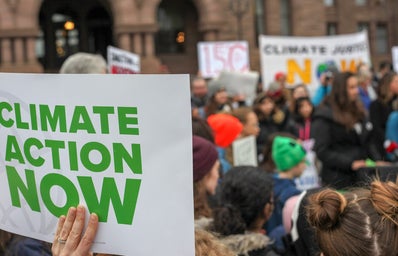Twenty thousand diplomats are meeting to discuss the planet’s future right now–here’s what to take away from the first week of meeting, and what to expect going forward.
This November, world leaders are meeting in Glasgow, Scotland for “the world’s last best chance to get runaway climate change under control.” This meeting is the COP 26, or the 26th annual “Conference of the Parties,” which is the 26th attempt for almost every nation in the world to reach an agreement on how to combat climate change. While this conference is crucial to our future, it may be hard to navigate all of the information and action plans that are currently being discussed, so here are some things to know about what has been discussed at the summit so far.
Methane emissions
As of the second day of the summit, 100 nations and parties have agreed to a global pledge to cut methane emissions by 30% by 2030. Methane is the main component of natural gas energy and has 80 times more warming power than carbon dioxide, another famous greenhouse gas. The main way the United States plans to do this is through stronger Environmental Protection Agency regulations and through developing technology to better detect and monitor methane leaks. You can read more about the global fight to cease methane emissions on the official White House website.
The Unequal Effects of Climate Change
COP 26 is currently focusing on solutions to climate change with the Climate Vulnerable Forum, or CVF. The CVF is a group of 48 of the countries most at risk from climate change. This includes countries with fewer economic resources, coastal countries or islands especially susceptible to ocean changes, and those with desert climates near the equator. According to the UN’s Intergovernmental Panel on Climate Change, Africa is warming faster than any continent in the world, even though they make the least emissions. The main message from the CVF thus far is the promotion of teamwork with larger countries to help halt the effects of climate change. An example of this teamwork is the allocation of 8.5 billion U.S dollars from France, Germany, the UK, and the United States towards helping South Africa stop its reliance on coal power. If you want to learn more about both global and national climate justice, check out the Global Campaign to Demand Climate Justice.
Deforestation
According to the BBC, more than 100 countries have promised to “reverse deforestation” by 2030. Although deforestation has had its fair share of global initiatives before, this one is much better funded–perhaps partially because of the terrifying news that the Amazon rainforest now emits more carbon dioxide than it absorbs that surfaced this year in July. While stopping deforestation will take more than just individual action (and hopefully this initiative will push us in the right direction), there are some things you can do to reduce your impact on global forests. Check out this article on brands you can shop from that plant trees when you buy a product.
What to Look For Going Forward
Although it’s too early to fully know what the outcome of COP 26 will be, it’s important to keep an eye out for what’s happening in the second week of the summit. According to the Council of Foreign Relations, a successful COP would “instill a sense that we’re still in it together as a world.” While there have been signs of teamwork, foreign policy was not shed at the door of the summit, as seen with Joe Biden’s speech slamming Russia and China for not appearing at the summit, both countries with complicated relations with the United States that have had uneasy pasts of cooperating with global environmental regulations.
To stay updated on the COP26 Summit, check out news sources like BBC, The Washington Post, and the COP 26 website for relatively unbiased information. If you’re not satisfied with your own personal fight for environmental conservation, check out this HerCampus article on ways to help the environment, and calculate your own carbon footprint (and learn how to reduce it!) at footprintcalculator.com.




